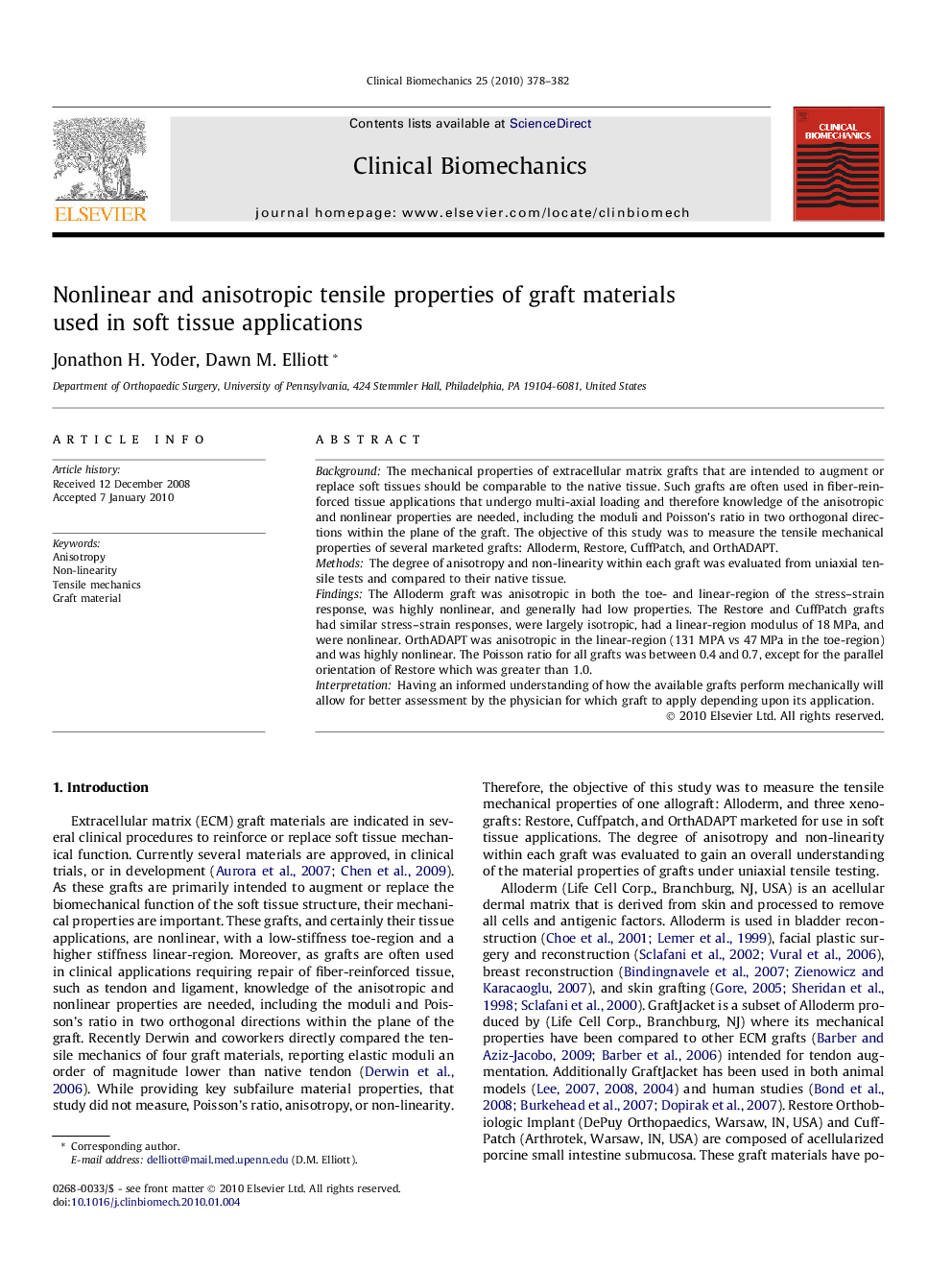| Article ID | Journal | Published Year | Pages | File Type |
|---|---|---|---|---|
| 4050625 | Clinical Biomechanics | 2010 | 5 Pages |
BackgroundThe mechanical properties of extracellular matrix grafts that are intended to augment or replace soft tissues should be comparable to the native tissue. Such grafts are often used in fiber-reinforced tissue applications that undergo multi-axial loading and therefore knowledge of the anisotropic and nonlinear properties are needed, including the moduli and Poisson’s ratio in two orthogonal directions within the plane of the graft. The objective of this study was to measure the tensile mechanical properties of several marketed grafts: Alloderm, Restore, CuffPatch, and OrthADAPT.MethodsThe degree of anisotropy and non-linearity within each graft was evaluated from uniaxial tensile tests and compared to their native tissue.FindingsThe Alloderm graft was anisotropic in both the toe- and linear-region of the stress–strain response, was highly nonlinear, and generally had low properties. The Restore and CuffPatch grafts had similar stress–strain responses, were largely isotropic, had a linear-region modulus of 18 MPa, and were nonlinear. OrthADAPT was anisotropic in the linear-region (131 MPA vs 47 MPa in the toe-region) and was highly nonlinear. The Poisson ratio for all grafts was between 0.4 and 0.7, except for the parallel orientation of Restore which was greater than 1.0.InterpretationHaving an informed understanding of how the available grafts perform mechanically will allow for better assessment by the physician for which graft to apply depending upon its application.
